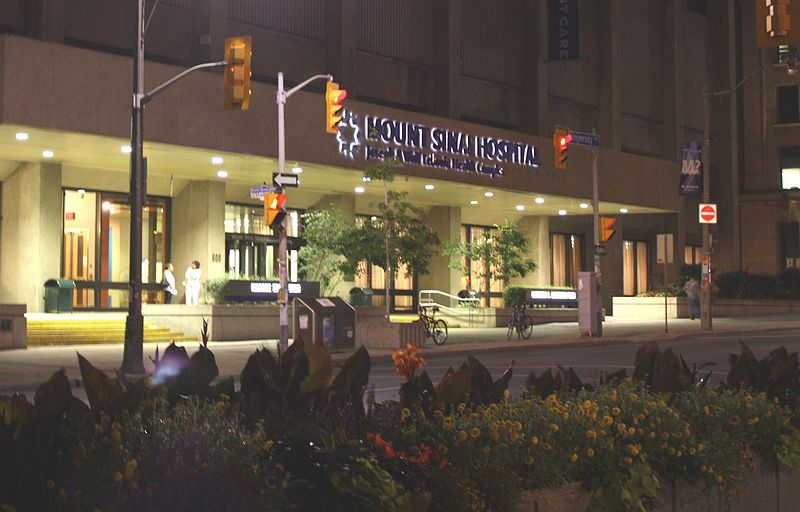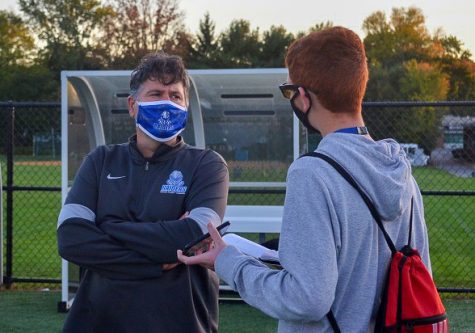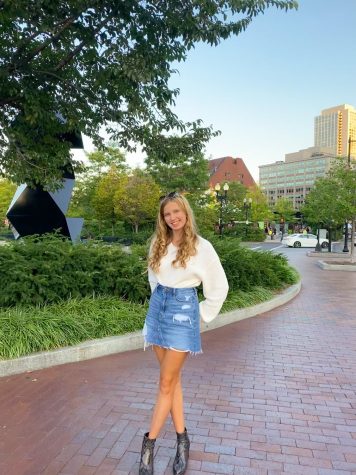Scenes from the COVID-19 frontlines
Matthew Levine and Emily Wyrwa
April 9, 2020
Trevor Pour shaved his beard a few weeks back to allow the n-95 mask to cover his face. As Pour walks through Mount Sinai Hospital in New York City, the colleagues he used to talk with in the morning and the patients he used to laugh with in the lobby began to blur together — everyone looks the same from behind a mask.
This lack of connection is the new normal in practicing medicine in the aftermath of the coronavirus; a normal that will be around for the foreseeable future.
Pour remembers the day that the atmosphere in the hospital changed. In fact, he can name the exact date: March 15. He used to stroll into work with a button-down shirt and coffee in hand, but now he hustles into work in his scrubs and has saved money on his daily coffee order.
“I don’t have any facial features and no one else does,” Pour said. “We all just look the same wearing all this stuff on our faces, which takes away from the personal aspect of medicine. I really like connecting with my patients and being able to see their facial responses.”
Pour works in the emergency department at Mount Sinai and is the director of the residency program at the hospital — a program that provides medical students with a place to work right after graduating. He has worked at Mount Sinai for ten years, spending half of his time teaching and half of his time practicing medicine.
During this unprecedented time, Pour believes Mount Sinai has handled the pandemic as well as it can with the given resources; however, he does not expect that to last.
“While I think that we were prepared in a way that has allowed us to cope with things that we’ve seen so far I don’t know if that’s going to last,” Pour said.
Pour cited the ongoing outbreak in Italy as a sign for the future in NYC and NJ. After a plateau in cases in Italy, the number of new cases in the country was pushed to 3,836 compared to the former, 3,039 as of Wednesday morning.
“If you look at Italy, which had this happening weeks before we did, they’re still in the thick of it; they haven’t recovered in any meaningful way at this point,” Pour said. “They’re still right at that plateau level, and we don’t know how long that’s going to last.”
Pour’s other main fear is that the influx of “good news” will cause people to neglect the guidelines and return to normalcy; he worries that premature socialization may result in a second peak in the number of COVID-19 cases. He fully agrees with NJ Governor Phil Murphy’s decision to close all state and county parks and hopes that this decision will be accompanied by further restrictions to ensure that people abide by social distancing guidelines.
“We have to be really careful about telling the public that things are getting better because we have to balance that hope with also reminding people that they need to be careful,” Pour said. “We need to be aware of the successes that we’re having because in a time like this you need to celebrate the wins…. But when it comes to truth and when it comes to really understanding what’s truly going on I think it’s just important to take everything that people say, in the context of what their agenda or their goals are.”
As Pour embarks on his ten-mile bike ride from Upper East Side Mount Sinai to his Brooklyn apartment, he uses the empty streets of Brooklyn as an opportunity to escape from this bleak reality. With that said, Pour hopes that this experience will only lead to a more prepared society.
“I have a future that I’m hoping we’re going to see after this, which is one that is more prepared for something like this,” Pour said. “I’m hoping that we see a changed world after this, I’ll be really sad if we don’t, but again time will tell.”




